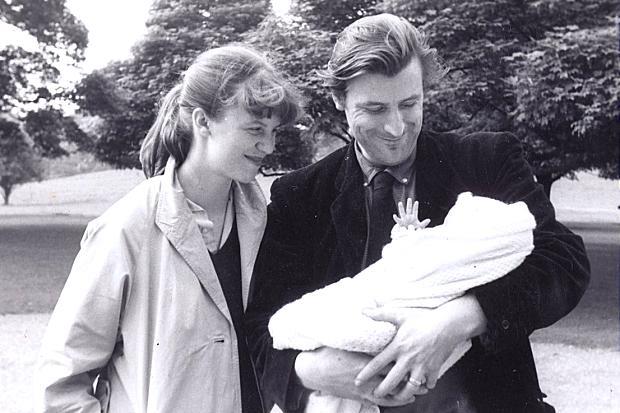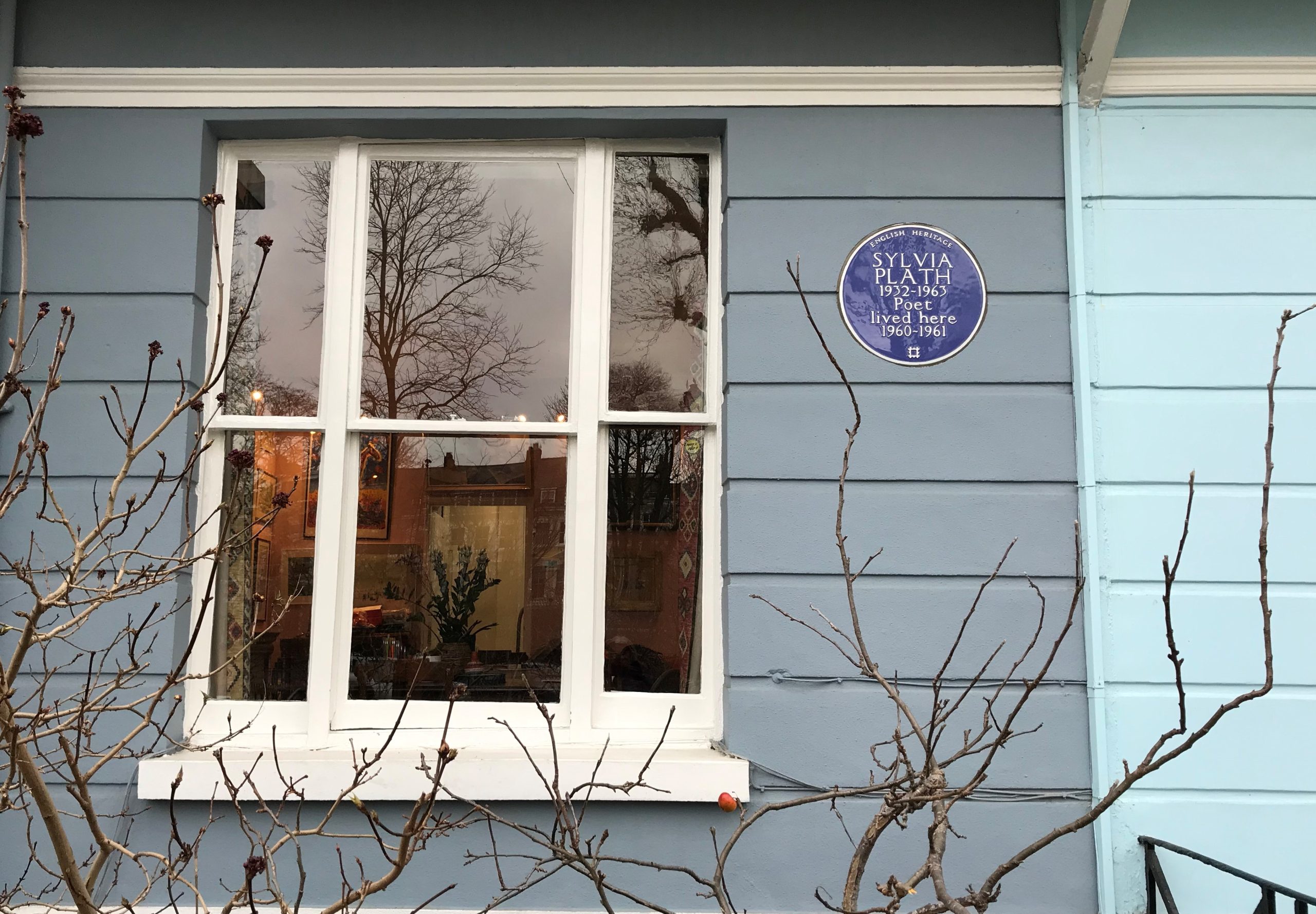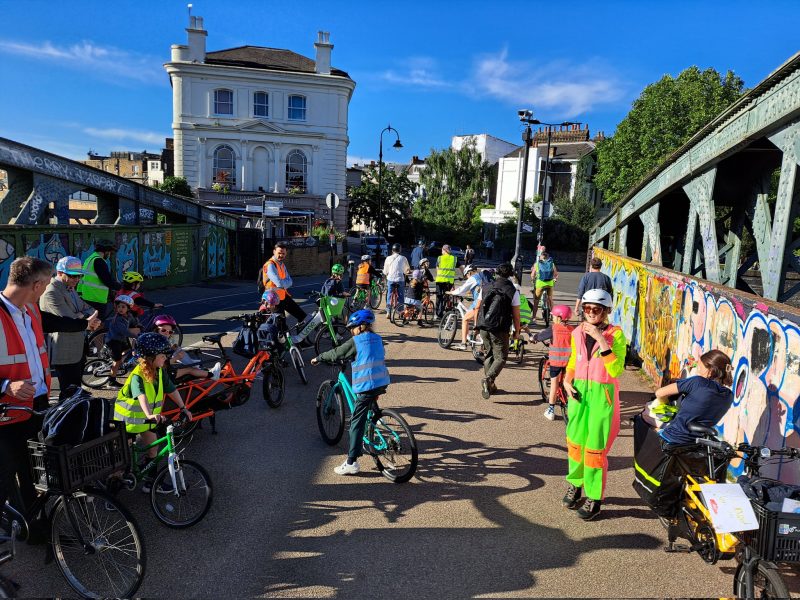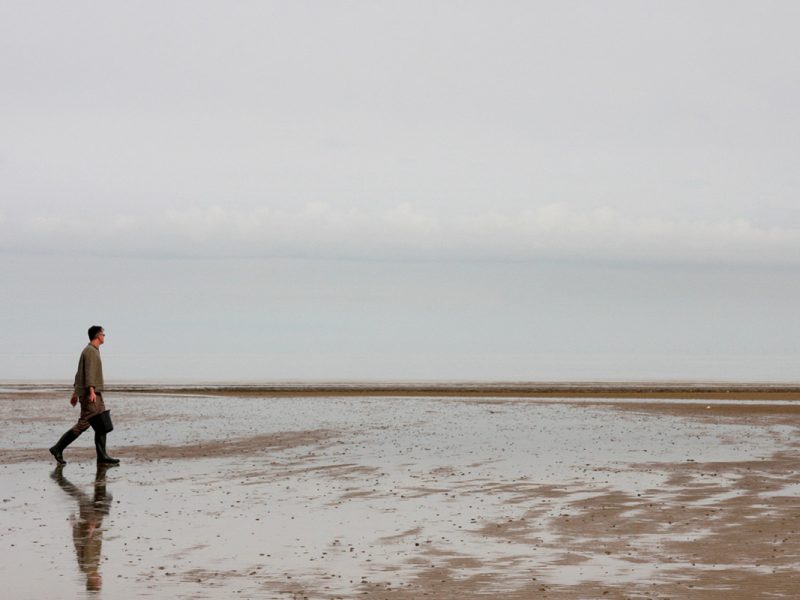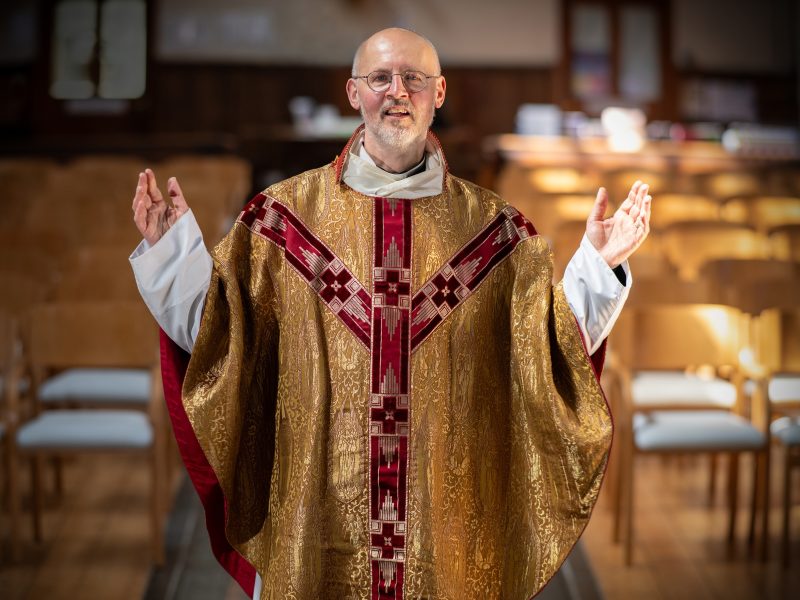“When I came to my beloved Primrose Hill, with the golden leaves, I was full of such joy.”
This week marks the 60th anniversary of the death of Sylvia Plath, here in Primrose Hill.
Sylvia and her husband, the poet Ted Hughes, settled in Primrose Hill in January 1960 at 3 Chalcot Square ‘overlooking a little green with benches and fences for mother and children, five minutes walking distance from Primrose Hill and ‘beautiful’ Regent’s Park’. The Chalcot Square flat cost 3 guineas a week!
Sylvia was pleased to be close to the launderette, the shops, and the doctor’s surgery. They enjoyed the proximity of the West End and often went to the theatre or an art exhibition. They both loved Primrose Hill and the zoo and went out for walks, day and night. Ted even considered the possibility of studying zoology. They used to listen to the sound of seals barking from their flat.
The time spent in Chalcot Square was a struggle as they were both ambitious writers at such an early point in their careers. They weren’t earning enough income to support their growing family, especially as Sylvia’s letters reveal her hopes for between four and seven children! In Chalcot Square, Plath published her first volume of poetry, The Colossus (1960).
Sylvia and Ted had two children and moved to Devon to create more space. After the marriage collapsed, Sylvia returned to Primrose Hill and moved into 23 Fitzroy Road, ‘the street and the house . . . where I’ve always wanted to live . . . it is WB Yeats’ house – with a blue plaque over the door saying he lived there’.
Fitzroy Road was Plath’s favourite street in the area, although she admitted the area was ‘quite slummy’ at the time, but it was on the way up and a house cost £9,250.
In the two months Sylvia lived at Fitzroy Road, she wrote Ariel, forty poems full of despair, anger and love which is seen as her most outstanding work.
The winter of 1962/63 was one of the coldest winters in 100 years. January saw the worst snowfall in London for 150 years. The pipes froze, the children were sick and the house had no phone. Dressing the children to go out and buy food in the snow and ice was beyond Sylvia. She was eating very little and became sick and despondent. As the snow thawed, the streets would ice over at night. There were frequent power cuts and the local shops ran out of candles.
Consequently Sylvia became depressed again. She had suffered from mental health issues and attempted suicide in 1953 so her mother was concerned about her mental health and wanted her to return to America. Sylvia replied she was living in ‘the one city in the world I’d like to live in, with its fine doctors, nice neighbours, parks, theatres and the BBC’.
On 11 February 1963, Sylvia made her final preparations to end her life. She placed milk, bread and butter next to her children’s cots, sealed the door with tape and wet tea towels, and opened the windows. Then she went into the kitchen and again sealed the door. She had taken sleeping pills. At 4.30am, she put a folded cloth in the oven, turned on the gas, knelt and placed her head on the cloth.
At 9am, the nurse arrived to look after the children, but couldn’t get into the flat. She heard the children crying so she asked for help from a workman to get into the building. They found Sylvia dead from carbon monoxide poisoning in the kitchen. The police and ambulance were called and her body was taken to University College Hospital.
Sylvia died at the age of 30.
There is no blue plaque to mark Plath at 23 Fitzroy Road, but in 2000, a plaque was unveiled at 3 Chalcot Square by Frida. When asked why there was no plaque in Fitzroy Road, Frieda replied “My mother died there, but she had lived here”.
